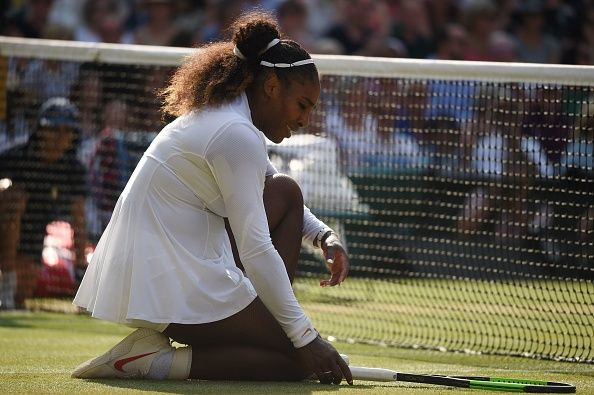Serena Williams Drug Test Row: Andy Murray Wants More Transparency

Amid the Serena Williams drug testing row, former No. 1 Andy Murray has called for more transparency regarding the frequency of tests.
Williams brought about major attention to the issue when she tweeted last week that she was to be tested again and cited discrimination as a factor as to why she was being tested more than any other player.
...and it’s that time of the day to get “randomly” drug tested and only test Serena. Out of all the players it’s been proven I’m the one getting tested the most. Discrimination? I think so. At least I’ll be keeping the sport clean #StayPositive
— Serena Williams (@serenawilliams) July 25, 2018
According to a tweet by Luke Thomas, it was the Wimbledon runner up's sixth test this year and in comparison, the last three Grand Slam winners as well as Maria Sharapova, who was suspended after testing positive for a banned substance in 2016, are yet to be tested in the same time frame.
Ahead of the Citi Open in Washington D.C. where he will play in just his third tournament and fourth match since July 2017, Murray was asked how often he was tested in light of the American's accusations.
The Briton himself, has criticized the International Tennis Federation (ITF) for their infrequent drug testing and spoke about the issue again, though he did not directly comment on Williams' case.
"I think in terms of the testing, I’ve had when I’ve been injured — it probably feels as if you’re being tested less because normally we’re travelling a lot and get tested a lot in competition," Murray said at the City Open pre-tournament press conference, according to Metro. "When you’re not playing it feels like it’s less. There have been periods in the last six months where I’ve been tested quite a lot out of competition and then more recently where I’ve not really been tested much at all."
"In terms of how much players get tested, I mean, I don’t know all of the details of numbers and the actual facts of how much everyone individually gets tested. Maybe tennis could do a better job with being more transparent with that and kind of showing exactly how many tests everyone has," he said.
"From what I’ve seen it’s quite vague — they put like 7+, which is a bit vague. It means someone could have seven or someone could have 20, which is obviously quite a big difference. Certainly since I first came on tour there’s been significantly more testing but that doesn’t mean it’s necessarily enough because in comparisons to other sports we don’t get tested loads. There’s enough money in tennis for us to have a better programme probably," Murray added.
Laura Wagner of Deadspin, however, reported that while Williams was tested more than any other major American star this year, the amount of tests she underwent are similar to that of all the top stars and champions in the sport, who are "annually tested 14 or more times, both in and out of competition."
World No. 2 and 20-time Grand Slam champion Roger Federer for example, said he was tested seven times in the month of June alone, as he too expressed frustration at the infrequency of his tests.
"I think it varies from place to place that you spend your time in," Federer said earlier this month. "Maybe that’s the part I don’t like so much: the inconsistency of the places where they test. I understand it probably also has something to do with the budget of WADA (World Anti-Doping Association), like flying somebody there just for that one test. Yet that shouldn’t be an excuse. That’s why I think after all we still need more funding."
"I don’t believe there’s ever going to be enough testing. What’s important is these people are professional, they know what they’re doing, they treat you like humans, not like criminals. Then it’s OK," he said.
© Copyright IBTimes 2025. All rights reserved.





















